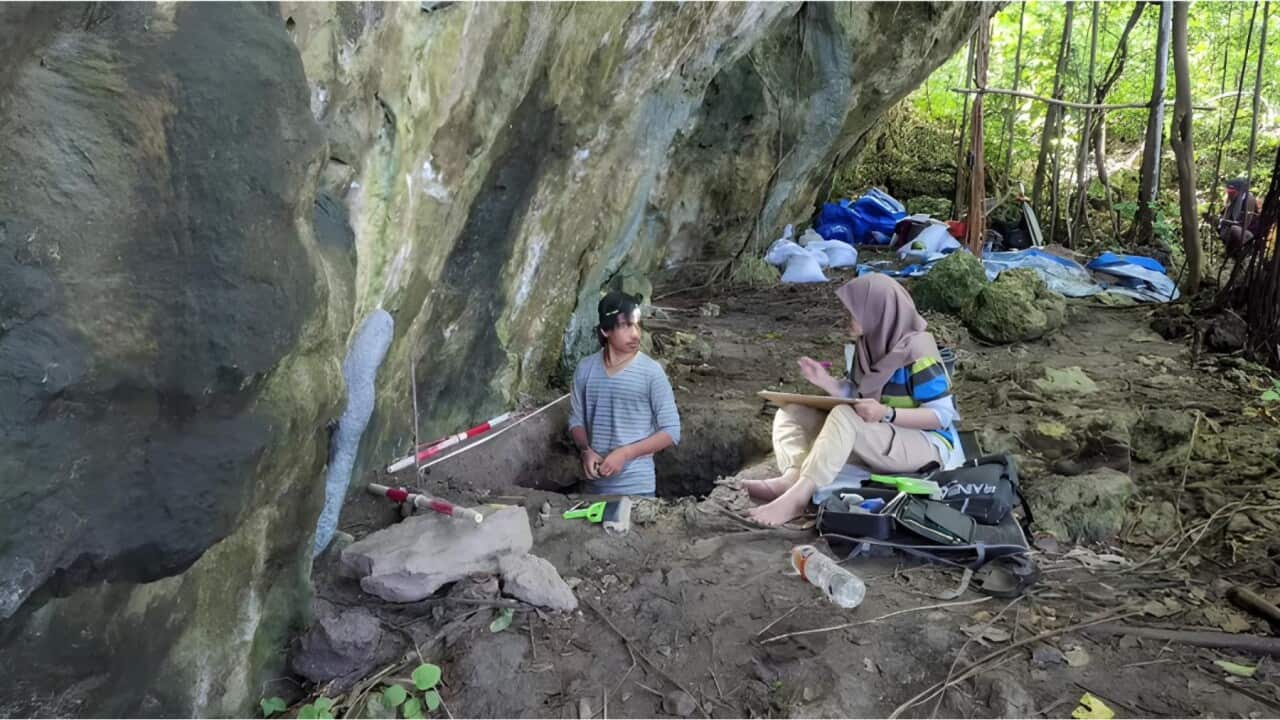New evidence has shed light on the possible migration path that ancient populations took to arrive in the Sahul Shelf — a landmass that encompasses modern-day Australia.
One of the oldest examples of cave art was uncovered on the Indonesian island of Sulawesi earlier in July. And now, .
Hendri Kaharudin, a PhD candidate at the Australian National University and lead author of this new research, said ancient remains found in a village on Tanimbar Islands — located just off the Sahul Shelf — suggest human activity and occupation there 42,000 years ago.
Sahul was a paleocontinent consisting of mainland Australia, Tasmania, New Guinea, and the Aru Islands and was split following the last ice age around 18,000 years ago.
Since the 1960s, researchers have long debated two possible ways that ancient people arrived on the Sahul Shelf.
The first migration path passes from Indonesia’s Sulawesi across to New Guinea — a route researchers already knew was once a land bridge to the country.
The second passes further south, from Bali across to Timor and the Tanimbar Islands.
It is this second group of islands that the new archaeological discoveries indicate to be a crucial thoroughfare.
“In the middle is a group of archipelago islands called Wallacea,” Kaharudin said. “So in order to come to Australia they had to island-hop; they had to find a way across the sea barrier.”
The new excavation suggests the southern path was a well-worn route, with researchers also finding evidence of advanced maritime technology and navigational skills.
Scientists also say the remains of marsupials are also evidence of migration, because the animals were not native to the islands.
Researchers say there is still evidence of human occupation in Australia dating back more than 60,000 years — and migration from Indonesia is just another piece in the puzzle.

